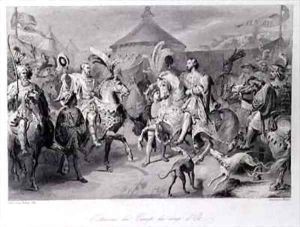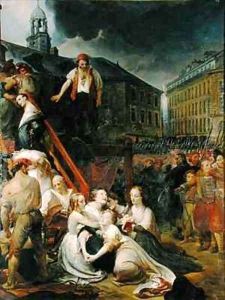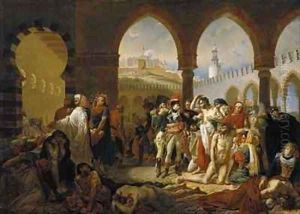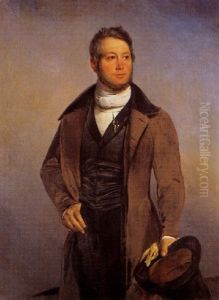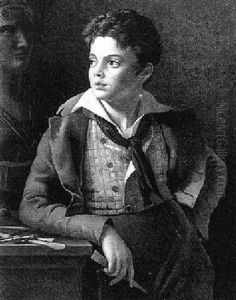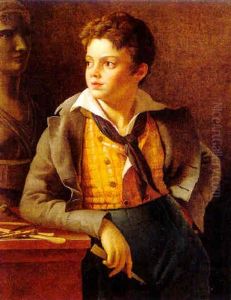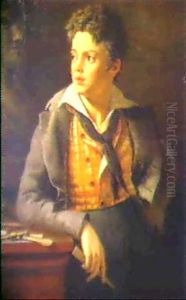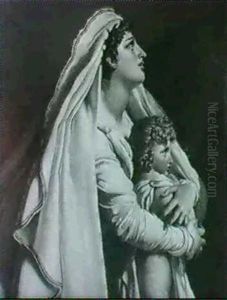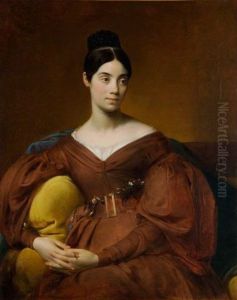Auguste Hyacinthe Debay Paintings
Auguste-Hyacinthe Debay was a French sculptor and painter born on April 30, 1804, in Nantes, France. He was the son of the sculptor Jean-Baptiste Joseph Debay, the elder. Influenced by his father's career, Auguste-Hyacinthe displayed a natural inclination towards the arts from an early age. He trained under his father before moving to Paris to study at the prestigious École des Beaux-Arts. There, he honed his skills and became proficient in both painting and sculpture, although he is primarily remembered for his sculptural works.
Debay's career gained momentum in the 1830s when he started exhibiting his works at the Paris Salon, an official art exhibition of the Académie des Beaux-Arts in Paris. His sculptures often depicted mythological themes, historical events, and classical subjects, reflecting the Romantic sensibilities of his time. He was part of a generation of artists that included Eugène Delacroix and Théodore Géricault, who were known for their expressive and emotionally charged works that broke away from the strictures of Neoclassicism.
Debay was also involved in public commissions, which included decorative works for prominent structures in Paris. His talents were recognized with various awards and honors, including medals at the Salon. Despite his success, Debay never quite reached the same level of fame as some of his contemporaries, and his work was later overshadowed by the emerging Impressionist movement, which radically shifted the direction of French art in the late 19th century.
Auguste-Hyacinthe Debay passed away on January 9, 1865, in Paris. While he may not be as widely known today, his contributions to French sculpture during the Romantic period remain significant, and his works can be found in museums and collections in France and beyond.
